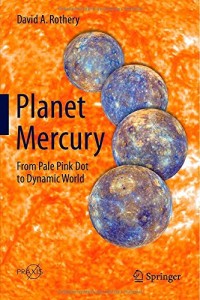 With one spacecraft coming to an end of its mission in March, and another set to launch in 2016, it’s an exciting time for Mercury. I sat down with David Rothery of the Open University last month to discuss his new book, Planet Mercury: From Pale Pink Dot to Dynamic World for New Books in Astronomy.
With one spacecraft coming to an end of its mission in March, and another set to launch in 2016, it’s an exciting time for Mercury. I sat down with David Rothery of the Open University last month to discuss his new book, Planet Mercury: From Pale Pink Dot to Dynamic World for New Books in Astronomy.
The innermost planet in our solar system doesn’t get a lot of press compared to places like Mars and Jupiter’s moon Europa, but it’s an incredibly intriguing planet. I’ll always have a soft spot for Mercury because my first project as a graduate student had to do with the orientations of the gigantic lobate scarps distributed across its surface. These vast tectonic features speak to the thermal evolution of a relatively small terrestrial planet that has been cooling over time, and they’re just one interesting aspect of the first rock from the Sun. From a wonky orbital resonance (a day on Mercury lasts two years – weird!) to an unexpected magnetic field, this little planet is full of surprises, and we’re just beginning to untangle them.
